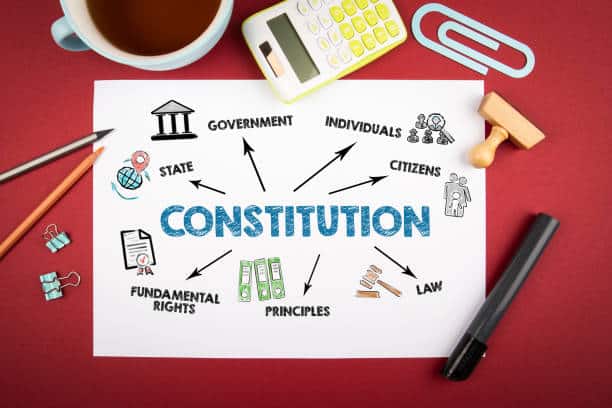The American Constitution is fundamentally based on the idea of selective incorporation. It is a key idea in American constitutional law that protects certain fundamental rights the same way all over the country.
By applying the protections of the Bill of Rights to the states through the due process provision of the Fourteenth Amendment, selective incorporation protects the citizens’ rights.
What Is Selective Incorporation?
Selective incorporation is a constitutional doctrine that keeps state laws from taking away the rights of American citizens. The United States Supreme Court uses it to ensure that state laws or procedures do not infringe on people’s rights.
Basically, selective incorporation lets the federal government limit the state legislature’s power. It also applies to cases involving everything from freedom of speech, freedom of religion, and the right to keep and bear arms.
What Are Examples of Selective Incorporation?
The Supreme Court has used selective incorporation to apply many provisions of the Bill of Rights to the states. Examples include:
#1. Freedom of Speech
The First Amendment’s protection of free speech has been incorporated and applied to the states, which means that state and municipal governments cannot implement legislation that abridges the right to free expression.
#2. Right to Bear Arms
The 2010 case of McDonald v. the City of Chicago, which held that state and municipal governments could not outlaw gun ownership, integrated the Second Amendment’s protection of the right to bear arms.
#3. Protection Against Unreasonable Searches and Seizures
The Fourth Amendment’s ban on unreasonable searches and seizures has been extended to the states. This means that state and local law enforcement agencies must follow the same rules as federal agencies when they search for and seize people.
#4. Right to Attorney
Anyone accused of a crime in a state court has the same right to an attorney as someone accused of a crime in a federal court. This results from incorporating and applying the Sixth Amendment’s protection of the right to an attorney.
Why Is Selective Incorporation Important?
Selective incorporation protects citizens’ fundamental rights and limits the state government’s authority. It enables citizens to challenge state actions that violate their protections under the Bill of Rights.
Without it, state and local governments could pass laws that limit fundamental rights like freedom of speech and the right to carry guns. Furthermore, it ensures that the protections in the Bill of Rights are the same all over the country.
Also, it recognizes that the federal government has the right to limit the power of the states to make laws, which is a vital part of how the American political system works.
Why Is it Called Selective Incorporation?
The Supreme Court of the United States has gradually applied the provisions of the Bill of Rights to the states under the Due Process Clause of the Fourteenth Amendment. Selective incorporation refers to applying the provision of the bill of rights over time.
The Supreme Court decided that the Due Process Clause of the Fourteenth Amendment should be incorporated and extended to states. This includes First Amendment protections, especially the freedom of speech and press.
Over time, the Court has selectively incorporated additional provisions of the Bill of Rights, including the Fourth, Fifth, Sixth, and Eighth Amendments. It remains ongoing as the Supreme Court determines which Bill of Rights applies to states.
How Does Selective Incorporation Happen?
A succession of Supreme Court judgments interpreting the scope and interpretation of the Fourteenth Amendment’s Due Process Clause results in selective incorporation. According to the Due Process Clause, no state may “deprive any individual of life, liberty, or property without due process of law.”
In the early 20th century, the Supreme Court began to view the Due Process Clause as a mechanism to “incorporate” and make relevant to the states the protections of the Bill of Rights. In the landmark cases, Gitlow v. New York (1925) and Near v. Minnesota (1929), the Supreme Court initially applied protections such as freedom of expression and the press to the states (1931).
Through selective incorporation, the Supreme Court has gradually extended more and more safeguards to the states over time.
The Court applies a double test to evaluate whether a particular section of the Bill of Rights should be incorporated. First, whether the right in question is “fundamental” to the American justice or freedom system must be determined.
The second test comes after the Court determines that the right is fundamental, then it is determined whether the right is “incorporated” and applied to the states under the Due Process Clause.
The Court’s decisions about this are often controversial, and some legal experts have criticized the Court for not including all of the clauses in the Bill of Rights.
What Is the Selective Incorporation Principle?
The concept of selective incorporation is founded on the notion that certain rights are indispensable to due process and must be applied to the states. Also, the Supreme Court bases it on the Fourteenth Amendment’s due process requirement.
The process gives the federal government a way to limit the states’ authority to enact laws and guard against the states violating the fundamental rights of citizens.
For example, in Miranda v. Arizona, the Supreme Court held that the Fifth Amendment right against self-incrimination applies to the states through the Fourteenth Amendment. This ruling made it mandatory for police officers to read a suspect their Miranda rights before interrogating them.
In the end, the United States Supreme Court has repeatedly upheld and established the doctrine of selective incorporation. Hence, the doctrine of selective incorporation has become accepted over time, as the Supreme Court has ruled in several cases in which the states’ authority was questioned.
What Are the Differences Between Selective Incorporation and the Incorporation Doctrine?
The incorporation doctrine and selective incorporation are two different approaches to applying the Bill of Rights to the states. The incorporation doctrine is a constitution that makes parts of the Bill of Rights applicable to the states through the Due Process clause of the Fourteenth Amendment.
Before the doctrine’s existence, the Supreme Court found the Bill of Rights only applied to the federal government and court cases. After the passage of the Fourteenth Amendment, the Supreme Court found that the Due Process clause of the Fourteenth Amendment included applying parts of the Bill of Rights to states (referred to as incorporation).
On the other hand, selective incorporation is a procedure by which the Supreme Court determines which elements of the Bill of Rights apply to the states and incorporates them. It indicates that the Supreme Court chooses to apply only some elements of the Bill of Rights to the states rather than the full Bill of Rights.
In conclusion, the incorporation doctrine is the constitutional principle that applies the protections of the Bill of Rights to the states. In contrast, selective incorporation is the process by which particular provisions of the Bill of Rights apply to the states.
What Is the Difference Between Total and Selective Incorporation
Total incorporation is a doctrine that pushes for the application of the Bill of Rights in its entirety across states. Therefore, the same obligations or restrictions of the federal government bind every state ensuring uniformity.
Selective incorporation is a doctrine where the US Supreme Court chooses certain parts of the Bill of Rights and applies them to the states through the Fourteenth Amendment’s “equal protection” clause. This means that only some, but not all, of the provisions of the Bill of Rights, apply to state governments.
Some pushed for total incorporation, but the Supreme Court disagreed and established selective incorporation instead. Hence, the Supreme Court followed the selective incorporation strategy, selectively implementing Bill of Rights sections on a case-by-case basis.
Conclusively, total incorporation argues for the states’ complete adoption of the Bill of Rights. In contrast, selective incorporation only includes those parts of the Bill of Rights that the Supreme Court has judged fundamental and important to due process and equal treatment under the law.
Differences in the Application of the Selective Incorporation
There have been differences in the application of selective incorporation over time. Applying the protections of the Bill of Rights to the states on a case-by-case basis, the Supreme Court has chosen a cautious approach to it.
This method has also resulted in variations in incorporating various protections throughout time. For instance, the Supreme Court adopted the prohibition against unreasonable searches and seizures in the Mapp v. Ohio decision in 1961. Then, in 2010, it included the right to bear arms in the McDonald v. City of Chicago case.
Conclusion
Selective incorporation is an essential constitutional process that has been key to ensuring the protection of basic rights at the federal and state levels. Due to this process, the Bill of Rights provisions became applicable to states. Therefore, everyone has equal legal protection and the right to due process. Although total incorporation is a suggestion for an alternative, selective incorporation is more practical in ensuring that states protect the constitutional rights of citizens. Also, as our society changes and new problems arise, selective incorporation will remain essential for protecting our rights and freedoms.
- WHAT IS A CORPORATION AND HOW DO YOU FORM ONE?
- Minimum Wage in Florida: What is Florida Minimum Wage in 2023?
- 27 BEST FRANCHISES TO OWN IN 2023: Top US Practices & Free Tips






